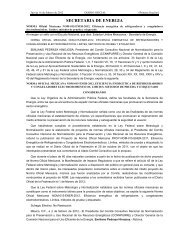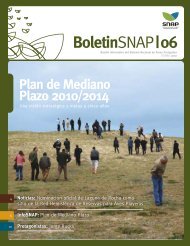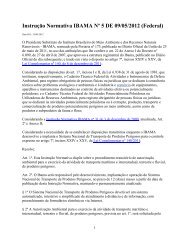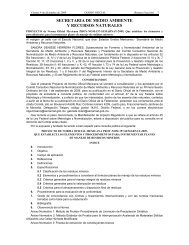OceAn science OceAn science OceAn science
OceAn science OceAn science OceAn science
OceAn science OceAn science OceAn science
You also want an ePaper? Increase the reach of your titles
YUMPU automatically turns print PDFs into web optimized ePapers that Google loves.
Research Priority 12: Understand the impact of climate variability and<br />
change on the biogeochemistry of the ocean and implications for its<br />
ecosystems.<br />
Changes in physical properties of the ocean (e.g., heat, freshwater and circulation), as well<br />
as biogeochemical properties (e.g., carbon, nitrogen, dust, trace elements, pollutants), can<br />
have a variety of impacts, particularly on ecosystems, ranging from coastal watersheds, to<br />
shallow and deep-water coral reefs, to open-ocean systems. For example, increasing ocean<br />
acidity, altered biogeochemistry, changing current patterns, loss of sea ice, rising sea levels,<br />
and modified salinity and sea-surface temperature may irreversibly alter ecosystems. Sustained<br />
observations (e.g., global and coastal observatories), process research (e.g., air-sea<br />
exchange, ecosystem interactions) and modeling (e.g., coupled models integrating global<br />
and regional biological, chemical, and physical data) will help determine fluxes and cycling<br />
of biogeochemical variables and help identify and quantify impacts on ecosystems of<br />
the greatest importance. These efforts will also help identify subsequent feedbacks regarding<br />
the influence of ecosystems on climate (e.g., influence of ocean acidification on carbon<br />
uptake and sequestration, desertification, increasing iron dust and subsequent oceanic<br />
algal blooms). This effort will serve to support effective management of these ecosystems<br />
so that they remain healthy and viable, in conjunction with research examining impacts to<br />
and influences on ecosystem health.<br />
Research Priority 13: Apply understanding of the ocean to help project<br />
future climate changes and their impacts.<br />
The ocean is getting warmer, more freshwater is being added by melting ice sheets, and<br />
more CO 2<br />
is being absorbed from the atmosphere. The ability to predict the timing and<br />
magnitude of climate changes due to these and other processes and to understand how<br />
such changes will impact society will be enhanced by quantifying the predictability of<br />
these processes and increasing temporal and spatial resolution and dynamical complexity<br />
of global ocean models. Integrating expanded global and regional ocean observations,<br />
coordinated paleoceanographic data and assessments, and enhanced process research into<br />
global coupled ocean-ice-atmosphere-land climate models will help determine the past<br />
and present influence of ocean processes on climate change, including the potential for<br />
rapid or abrupt change (e.g., “tipping points”). Coupled climate models will support improved<br />
short-term predictions (e.g., hurricane intensity) and long-term projections (e.g.,<br />
sea-level rise) that will enable local, tribal, state, regional, and federal policy- and decision-makers<br />
to plan for and adapt to effects of climate change.<br />
32

















